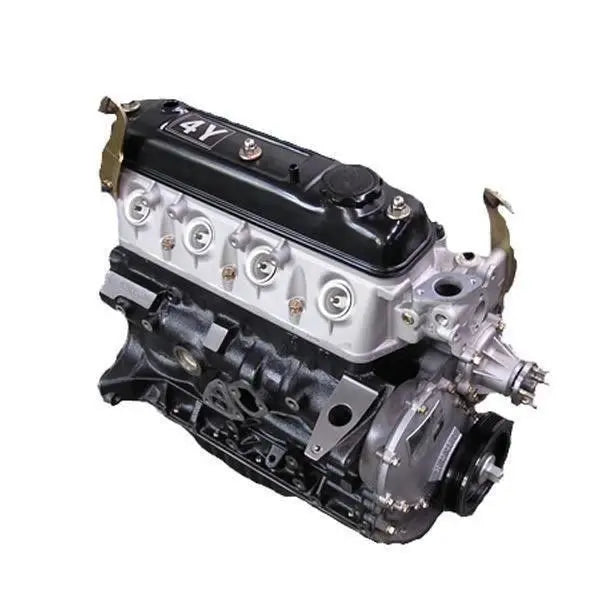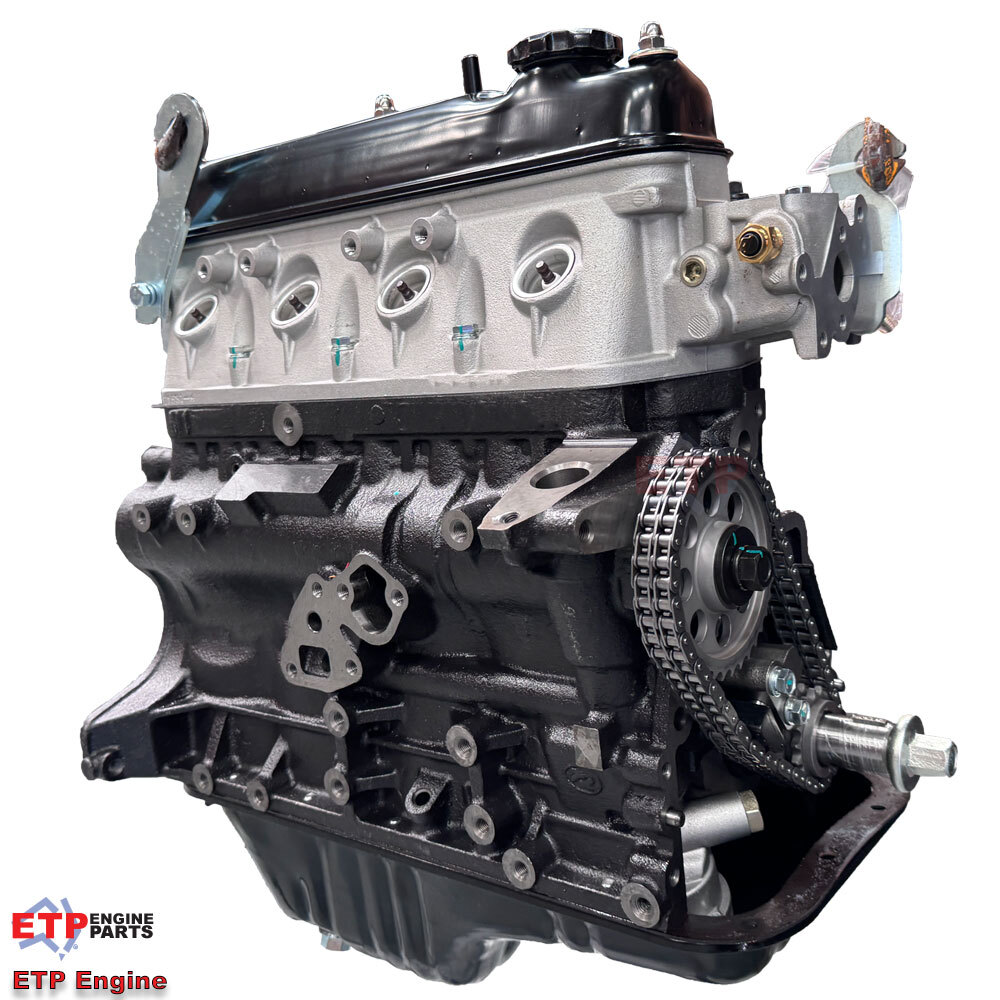Understanding the Mechanics Behind the 4Y Engine’s Power and Durability
Exploring the Various Kinds Of Engine: Which One Fits Your Needs?
In the quest to determine the most appropriate engine type for your particular demands, it is vital to assess the distinctive features and advantages of each alternative readily available. Inner burning engines remain to dominate due to their reliability, while electrical engines are obtaining grip for their sustainability. Hybrid engines supply a versatile concession, and diesel motor stick out for their power sought after applications. Furthermore, alternative gas engines present innovative solutions, albeit with particular constraints. Comprehending your concerns will certainly be crucial in this decision-making procedure, resulting in an exploration of variables that might affect your selection.

Internal Combustion Engines
Interior burning engines (ICEs) are the foundation of modern-day transportation, powering a vast selection of vehicles from autos to planes. These engines operate on the concept of converting gas into mechanical power with a series of regulated explosions within a combustion chamber. One of the most typical kinds of ICEs include fuel engines, diesel engines, and rotating engines, each designed to satisfy specific efficiency and effectiveness demands.
Gas engines typically use trigger ignition, while diesel engines count on compression ignition, causing distinct distinctions in gas efficiency and power outcome (4y engine). Rotating engines, or Wankel engines, use a small layout and smooth operation, however are much less commonly utilized in mainstream applications
ICEs have actually gone through substantial developments in modern technology, consisting of the introduction of turbocharging and fuel injection systems, which enhance total performance and performance. In spite of their effectiveness renovations, ICEs encounter boosting scrutiny because of their environmental effect, specifically regarding greenhouse gas emissions. As the automobile sector develops, the future of ICEs stays a subject of dispute, stabilizing efficiency, performance, and environmental factors to consider. However, they proceed to play a crucial role in global transportation infrastructure.
Electric Engines
As concerns concerning environmental sustainability and fossil fuel dependence expand, electric engines have arised as an engaging alternative to internal burning engines. These engines use electric motors powered by batteries or gas cells, supplying a cleaner and a lot more efficient means of propulsion.
One of the key benefits of electric engines is their reduced exhausts. Unlike standard engines that shed fossil fuels, electrical engines create zero tailpipe exhausts, substantially reducing air contamination and adding to improved public wellness. Furthermore, the performance of electrical motors frequently goes beyond that of inner burning engines, converting a greater proportion of power from the source of power right into useful power for movement.
Electric engines are additionally noteworthy for their silent operation, making them excellent for urban environments. 4y engine. The simplicity of their layout leads to less moving parts, which can bring about lowered maintenance costs and boosted integrity in time
Nonetheless, challenges continue to be, including battery manufacturing impacts, charging facilities, and array limitations. In spite of these difficulties, the growing financial investment in electrical vehicle innovation and eco-friendly energy sources factors towards a promising future for electric engines, positioned to play a critical role in the shift toward lasting transport.
Crossbreed Engines
Mixing the advantages of both standard and electric inner burning engines, hybrid engines stand for a versatile service in the mission for effective and sustainable transportation. These engines integrate a fuel or diesel motor with an electrical motor, permitting improved fuel effectiveness and lowered exhausts contrasted to standard lorries.
Crossbreed engines run in several settings, using the electrical motor for low-speed driving and the internal combustion engine for greater speeds or when more power is needed. This dynamic operation not just boosts gas economic climate but also adds to a smoother driving experience. Regenerative braking is an additional critical feature, recording energy generally lost during stopping and rerouting it to charge the battery.

As consumers significantly focus on eco-friendliness, hybrid engines stand out as a sensible option, offering a reliable balance of efficiency, efficiency, and ecological obligation. This adaptability makes them appropriate for urban travelling and long-distance travel alike.
Diesel Motor
Efficiency and look at here power are hallmarks of diesel motor, which have actually long been favored for their effectiveness and fuel economic situation. These engines operate the principle of compression ignition, where air is compressed to a high temperature level before fuel is infused, igniting it without the requirement for trigger plugs. This process makes it possible for diesel engines to accomplish greater thermal efficiency contrasted to fuel engines, equating right into far better fuel gas mileage and reduced carbon dioxide discharges.
Diesel engines are specifically fit for heavy-duty applications such as trucks, buses, and industrial equipment, where torque and resilience are vital. Their layout generally includes stronger components to endure the higher stress generated during operation, resulting in longer service life and decreased maintenance expenses.

Alternate Fuel Engines
While diesel engines have lengthy dominated the landscape of durable power sources, alternative gas engines are getting traction as sensible choices for a more lasting future. These engines use a range of fuels, such as pressed natural gas (CNG), ethanol, hydrogen, and gas, intending to minimize greenhouse gas emissions and dependence on fossil fuels.
One substantial advantage of different fuel engines is their potential to lower carbon footprints. For example, CNG engines send out fewer toxins compared to typical diesel engines, making them ideal for metropolitan transit systems and fleets seeking to improve air quality. Ethanol, stemmed from biomass, not just decreases exhausts but likewise supports farming economic climates.
Hydrogen gas cells represent an innovative growth in this realm, providing zero-emission power via a chain reaction in between hydrogen and oxygen. Difficulties such as facilities advancement and manufacturing costs continue to be challenges to prevalent adoption.
Final Thought
In verdict, picking the appropriate engine type requires cautious factor to consider of details demands and choices. Internal combustion engines offer reliability, while electric engines focus on sustainability and minimized upkeep. Crossbreed engines incorporate the benefits of both, improving effectiveness, whereas diesel motor supply superior power and torque for durable applications. Alternate fuel engines present environment-friendly choices, albeit with prospective facilities difficulties. Inevitably, a comprehensive analysis of driving behaviors and ecological worths will help with an informed choice pertaining to engine choice.
Hybrid engines offer a functional compromise, and diesel engines stand out for their power in demanding applications. The most typical kinds of ICEs consist of gasoline engines, diesel engines, and rotating engines, each created to meet specific efficiency and efficiency needs.
Unlike traditional engines that melt fossil fuels, electrical engines create zero tailpipe exhausts, substantially lowering air contamination and contributing to improved public wellness.Hybrid engines run in several settings, utilizing the electrical motor for low-speed driving and the internal burning engine for greater speeds or when more power is required. Hybrid engines integrate the advantages of both, improving efficiency, whereas diesel engines supply premium power and torque for sturdy applications.